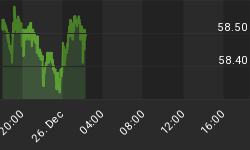Gold Jumps as Bernanke Speaks; Long, Dull Summer Nears Its End
THE PRICE OF GOLD leapt towards the start of New York trade on Friday, adding $10 inside five minutes and reversing the last fortnight's drop as European shares rose to fresh 10-month highs.
Unwinding all of August's 2.3% loss above $955 an ounce, gold also rose against the other major currencies, hitting one-week highs for Japanese, Euro and UK investors.
Chinese stocks rallied once more, but held 15% below their peak of Aug. 4th. Crude oil rose back above $73 per barrel.
Federal Reserve chairman Ben Bernanke was due to open the Jackson Hole central-banking retreat just before US trading began.
"We believe there is once again some risk aversion creeping back into the market," says Walter de Wet at Standard Bank today.
"This could support the Dollar at current levels around $1.4300 against the Euro...[but] it should also support Gold."
"There's been a lot of investment demand recently," claimed a trader to Reuters this morning. "The reallocation of investors portfolios is still taking place and overall this is still favourable for gold."
So far this summer, however, lower volatility in the Gold Price has matched lower trading volumes in other financial markets.
Total volume at the New York and American stock exchanges fell to 4.41 billion shares on Wednesday, according to the Wall Street Journal, "down 16.2% from the 65-day average."
Gold dealing volumes in London - heart of the world's Gold Bullion market, where next weekend's Bank Holiday will mark the end of the vacation season - fell last month by half as much again as the typical June-to-July drop, down by 13.6% on London Bullion Market Association clearing stats.
The Gold Price in Euros has meantime become less volatile than at any time since May 2005 - and with the Dollar-Gold Price closely mapping the Euro/Dollar exchange rate, it's been less than half as volatile as gold priced in Dollars on a daily basis since the start of this month.
In the 10 weeks since June 8th, the Dollar Gold Price traded in a 7.4% range (some $67 an ounce). Gold priced in Euros has moved inside a 4.0% band (just €26 per ounce).
"[Gold has become] about as interesting as watching the Moody Blues in concert," says the anonymous London hedge-fund manager at the Fintag blog today.
"The waiting is the hardest part," writes a Canadian investment advisor in the Financial Post, calling 2009 "an exercise in frustration and puzzlement."
On the political front, meanwhile, Zimbabwe central-bank chief Gideon Gono yesterday proposed "the guarded reintroduction of the Zimbabwe Dollar where such a new currency will be fully backed by credible, tangible and locally available assets, such as gold, diamonds or platinum, among several other possibilities."
Since abandoning the Zimbabwean Dollar and switching to foreign currencies in July, the domestic economy has seen price-inflation fall from 231,000,000% per year to 1% month-on-month.
Russia's central bank - which chose to deny on Thursday that it's planning to devalue the Rouble any further, after watching it slide by one-third during the global financial crisis to date - yesterday reported a sharp increase in its Gold Bullion reserves.
Buying 13 tonnes of gold in July, an increase of some 3.7% from a month earlier, the Bank of Russia has grown its gold holding to 567 tonnes, the tenth largest in the world and larger by almost one-half from five years ago.
"I do not think [Gold] will replace everything else," said Russian finance minister Arkady Dvorkovich earlier this summer when asked about the Kremlin's policy on foreign reserves. "It would be naive and unjustified.
"But the growing role of gold amid the crisis could be a topic of discussions in the near future."
Opening the annual summit of central bankers at Jackson Hole, Wyoming today, US Fed chairman Ben Bernanke entitled his speech "Reflections in a Year of Crisis".
Two years after the global financial crisis began in Aug. 2007, new data from the Mortgage Bankers Association yesterday showed 13.2% of US mortgages are now either a month or more overdue, or in foreclosure, up from 9% this time last year.
Prime loans to lower-risk home buyers have risen from 44% of foreclosure starts to 58%. Prime fixed-rate mortgages, seen as the lowest-risk loans, accounted for one-third of foreclosure proceedings between April and July, compared with one-fifth during the same period in 2008.















